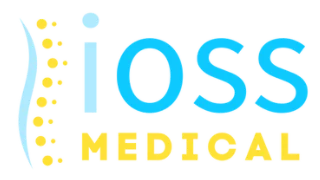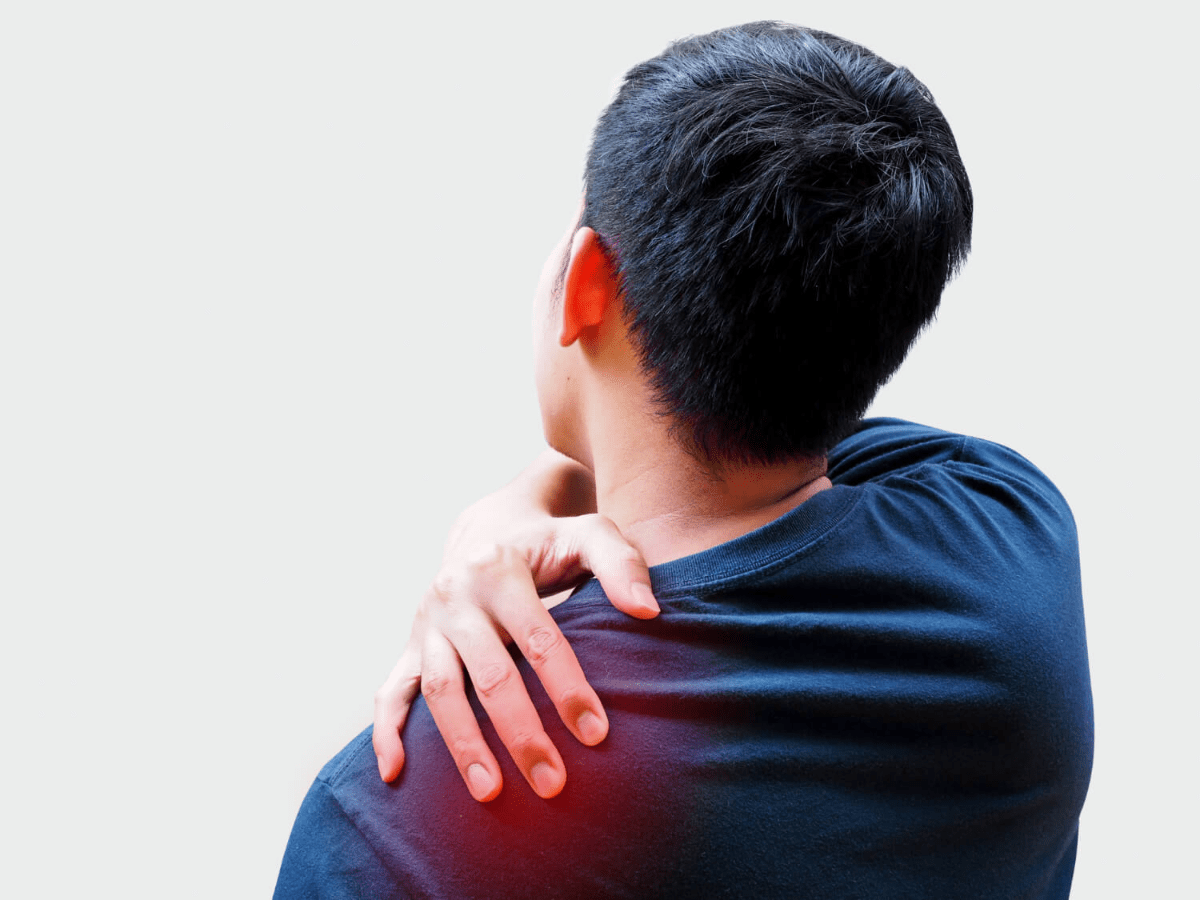Do you experience shoulder pain that has persisted to become chronic? Dr. Calvert of the Institute of Orthopedics, Spine & Sports situated in Linden, NJ is here to assist you. Dr. Calvert is both experienced and qualified to give you professional care that is due to your condition and the overall goal of developing effective strategies to manage the pain in your shoulder area to enhance your quality of life. Stop suffering and return to freedom of movement with the help of Dr. Calvert and the unique oriental wellness concept.
You no longer ought to suffer from shoulder pain and be restricted in your daily activities. Visitors are requested to book an appointment with Dr. Calvert by calling us at (973)-922-9515 during normal business hours to begin the process of leading a life that is free of pain.
Understanding Shoulder Pain
The shoulder joint is a multiarticulate joint that consists of bones of one joint, muscles, tendons as well as ligaments that enable the joint to give multiple varieties of movements. Because of the high level of complexity combined with the shoulder’s ability to move in numerous directions, it is easily injured and affected by different diseases such as tears of the rotator cuff muscles, bursitis, tendonitis, and arthritis. It can lead to chronic pain, widespread stiffness, and even a decrease in the ability to move – which are signs that will dramatically influence the person’s quality of life.
Causes of Shoulder Pain
The shoulder joint is intricately designed and anatomically highly mobile, factors which make it rather vulnerable to numerous pathologies. That is why the first step in the treatment of shoulder pain is to distinguish the causes of the disease. Among common causes, rotator cuff injuries are vast and are characterized by tendonitis, which is the inflammation of the rotator cuff tendons that is usually a result of overuse or repetitive motions, and rotator cuff tears which may be of partial or full thickness and are often induced by acute trauma as well as general wearing out of the rotator cuff tendons and muscles.
One of the common conditions that affect the shoulders and that is because of repetitive body movements or pressure on the joint is bursitis, which is the inflammation of the bursae. Aches and pains related to arthritis can also occur in the shoulder and there are two classifications of arthritis; osteoarthritis which is a degenerative disease that leads to the wearing away of the cartilage and rheumatoid arthritis is an autoimmune disorder that results in inflammation of the lining of the joint.
Another cause is adhesive capsulitis or frozen shoulder which is associated with stiffness and pain in the shoulder joint that manifests gradually and is characterized by limited mobility. Impingement of the shoulder is defined as the rubbing of the shoulder blade on the rotator cuff tendons during arm lifting which causes inflammation.
Dislocations occur when the bone in the upper arm slips out of the shoulder joint, this mostly occurs because of a fall or any impact force. Shoulder injuries occur because of a break in the bones found in the shoulder, clavicle, scapula, or humerus. Tendon ruptures are rather acute injuries to the cords that join muscles to bones such as the biceps tendon.

Symptoms of Shoulder Pain
Musculoskeletal disorders that result in shoulder pain present different signs depending on their nature and stage. Some of the signs include pain, which may be severe and throbbing, shooting down the arm or up to the neck, provocative by motion particularly when lifting objects or stretching the arm. Pain is another typical complaint and occurs along with stiffness of the joint which restricts the movement of the shoulder in the intended joint. There is usually inflammation around the shoulder joint, one manifesting as swelling and redness.
Poor shoulder muscle tone also makes it challenging to lift things and perform any task that entails the use of arms since the strength of the shoulders is somehow pulled. The unusual feeling of clicking or pop when performing some movements involving the shoulder joint may be because of the unstable joint and/or damaged cartilage. The number or tingling sensation in the concerned arm or hand is also frequent which is due to the compression or damage to the nerves.
Diagnosis of Shoulder Pain
The correct diagnosis is essential for the suitable management of shoulder pain. The process typically involves several steps:
1. Medical History
Some of the personal information that the doctor acquires from the patient’s medical history includes the type of pain, characteristics of pain, onset and duration, and factors that aggravate or relieve the pain. It also encompasses prior injuries, health issues, and habits in an individual’s life.
2. Physical Examination
It is an examination where the doctor will move the shoulder through various ranges of motions and test the strength of the shoulder muscles or any region that has a problem. To locate the affected structures specific performances and provocative tests may be employed.
3. Imaging Studies
- X-rays: Provide detailed images of the bones and therefore help in the identification of fractures, dislocations, or Gross Degenerative changes.
- MRI (Magnetic Resonance Imaging): Provides extremely clear pictures of soft tissues such as tendons, ligaments, and muscles which can help diagnose rotator cuff tears, tendonitis, and other soft tissue pathologies.
- Ultrasound: A modality that provides real-time visualization of soft tissue anatomy and can be useful in diagnosing tendon avails, bursitis, and impingement syndromes.
- CT scan (Computed Tomography): Offers good cross-sectional for the evaluation of fractures and incongruity of the shoulder joint.
4. Lab Tests
Some routine laboratory tests may include blood tests to eliminate infections or inflammatory diseases including rheumatoid arthritis.
5. Arthroscopy
In some situations, the doctor may recommend minimally invasive procedures such as arthroscopy. This small camera is then introduced between the shoulder blade and the collarbone to have a direct view of the area that is affected and, in the process, diagnose and treat disorders.

Non-Surgical Treatments for Shoulder Pain
1. Corticosteroid Injections
Corticosteroid injections are commonly used to reduce inflammation and alleviate pain in the shoulder. These injections contain a powerful anti-inflammatory medication that is injected directly into the affected area. The benefits of corticosteroid injections include:
- Rapid Pain Relief: The symptoms subside in most of the patients within a few days of the injection and reduce the pain substantially.
- Reduced Inflammation: There is an ability to reduce effusion and inflammation after taking corticosteroids – hence improving shoulder use.
- Long-lasting Effects: The effect of corticosteroid injections is that they relieve the pain and can reach up to weeks to months of effect depending on the person and the extent of the pain.
2. Hyaluronic Acid Injections
Hyaluronic acid is a natural substance found in the body’s joints that helps lubricate and cushion the joint surfaces. Hyaluronic acid injections can be particularly beneficial for patients with shoulder osteoarthritis. The advantages of these injections include:
- Improved Joint Lubrication: Hyaluronic acid increases the fluid in the shoulder joint thus increasing the smooth movement with reduced friction, hence minimizing pain.
- Enhanced Shock Absorption: These injections may also increase the ‘cushioning’ and thus limit the stress acting on the joint surfaces.
- Delayed Need for Surgery: Hyaluronic acid injections may do wonders in managing the patient’s symptoms and in some cases, may alleviate the need for surgery.
3. Platelet-Rich Plasma (PRP) Therapy
PRP therapy is a reparative therapy that involves the utilization of the patient’s blood samples for healing purposes. The blood is spun to platelet-rich plasma that is rich in growth factors required for the healing of the tissue. PRP therapy offers several benefits for shoulder pain:
- Natural Healing: Hence, PRP harnesses the natural healing abilities of the human body to repair the tissues that have been affected.
- Reduced Pain and Inflammation: The components of the PRP containing the growth factors improve the inflammation and pain of the shoulder.
- Improved Function: This technique is used to help patients regain their shoulder muscles and increased motion after PRP therapy.
4. Prolotherapy
Prolotherapy, also known as regenerative injection therapy, involves injecting a solution of dextrose and other substances into the affected shoulder area. This solution stimulates the body’s healing response, leading to the repair of damaged tissues. The benefits of prolotherapy include:
- Stimulation of Tissue Repair: As a matter of fact, prolotherapy helps in the formation of new tissues within the shoulder, healthier tissues.
- Long-lasting Pain Relief: There is also evidence that with tissue healing patients get long-term pain relief.
- Enhanced Stability: Based on what has been presented, one can conclude that the treatment in question can enhance shoulder stability and function due to the improvement in the strength of ligaments and tendons.
5. Botox Injections
Botox, commonly known for its cosmetic applications, can also be used to treat shoulder pain. Botox injections work by relaxing the muscles and reducing spasms that contribute to pain. The advantages of Botox injections include:
- Muscle Relaxation: Botox helps to diminish the pain signals from the shoulder muscles that could be particularly tight or spasming.
- Pain Reduction: Thus, shoulder comfort can be enhanced by the effect of Botox which helps to reduce muscular pain.
- Improved Range of Motion: The results may be that the patient’s shoulders become more stable or have an increased range of motion as muscle spasm is lessened.
What to Expect During Treatment
Patients involved in injective therapies at the Institute of Orthopedics, Spine, & Sports should brace themselves for an excellent, sensitive treatment. The process typically involves:
1. Initial Consultation: Typically, when setting up a first appointment with a specialist, the specialist will proceed to review the patient’s shoulder pain as well as personal and family history. This may involve medical examinations and imaging to ensure that the condition is well-diagnosed.
2. Treatment Planning: Depending on the evaluation, the specialist will draw up an individual plan for the therapy that includes the injection therapy, number of therapies, and other supportive interventions.
3. Injection Procedure: The injection procedure is normally done within outpatient facilities. Special attention should be paid to the procedure, and the specialist will inject the preparation only into the targeted area. Use of local anesthetic may be made to avoid any pains that the patient may feel all through the period of the operation.
4. Post-Treatment Care: Supported by literature research, the recovery process and post-treatment care instructions, such as any suggested activities or exercises to complement the treatment will be given to the patient. Subsequent check-up visits may be arranged with the doctor to assess the results of the put-forward treatment regimen.
Conclusion
Shoulder pain should not be a permanent part of your life as we have the solutions to such difficulty through non-invasive surgery. Options in general practice such as Injections: corticosteroid, hyaluronic acid, PRP therapy, prolotherapy, and Botox report a significant decrease in shoulder pain together with enhanced joint status. With caring and professional staff, and medical care that is tailored to each patient, we can assist clients to return to independent life. Several treatments can be effective for patients dealing with shoulder pain or visit our clinic for a solution that works.

